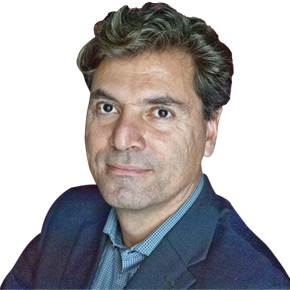The miscalculation of Serzh Sargsyan and manipulating constitutional changes back in December 2015 in order to stay in power for a third term and more has backfired and ignited popular anger. This was an innovation in Armenia’s politics as neither the first President Levon Ter-Petrosyan, nor the second President Robert Kocharyan – in spite of their own shortcomings regarding democracy and rule of law – had not dared to claim a third term. Probably Sargsyan and his associates in the ruling Republican Party did not think in relation with Armenia’s political tradition, but observed more closely what was happening elsewhere in post-Soviet republics. For example in Russia, after serving two terms, Vladimir Putin had become prime minister during the presidency of Dmitry Medvedev only to return to the presidency once again. This “castling” game provoked demonstrations in 2012 in Moscow and Petersburg, but eventually the protest wave disappeared while Putin is still in power. Armenia’s ruling circles hoped for the same. Indeed in the initial days of the protest demonstrations were limited in number, and mobilized urban middle classes, students and the intelligentsia. But on Sunday April 22 the massive demonstration in Yerevan but also in the provinces – over 100’000 people in Yerevan alone – showed that discontent was broader than the what we had seen in the last years in Armenia, that working class, and provincial and agricultural areas were also concerned.
In order to explain the social dimension of the protest movement, and what kind of change Armenia needs I will first start by the social and ideological basis of the ruling class in Armenia, then review the social composition of past protest movements, before concluding on the social base of the current dissenting movement.
Post-Soviet ruling class has multiple social origins. The Soviet-era nomenklatura had huge contradictions compared to the hegemonic capitalists in the West: while the Soviet nomenklatura had immense political power, it enjoyed only limited material privileges. In the collapse of the Soviet system this social cast aimed at transforming its political hegemony to economic privileges through mass privatization, but since the nomenklatura was largely demoralized it could not do it alone: Soviet and East European intelligentsia entered into an alliance for this massive transfer of wealth from state monopoly to private hands. Ideologically, the Soviet collapse discredited the idea of socialism, and the only surviving model was Western Capitalism, which, in the 1980’s, had taken a radical, neo-liberal turn under Reagan and Thatcher. Those two movements together – discredit of the idea of socialism and the radicalization of capitalism towards neo-liberal positions – largely dictated post-Soviet transition.
What concerns Armenia – as Mark Malkasian has argued – two distinct movements with two distinct social backgrounds evolved around the moment of the Soviet collapse. In Armenia the Pan-Armenian National Movement was led by the intelligentsia – Ter-Petrosyan and his comrades were often university professors and writers – while in Karabakh the movement was led by the Communist Party nomenklatura – Kocharyan and Sargsyan were apparatchiks in Karabakh’s administration and members of the Komsomol. It was under Ter-Petrosyan’s rule that the mass privatization of property, land and capital started, as well as electoral manipulation.
As I have argued in the first chapter of my book: From Perestroika to Rainbow Revolutions the whole idea of “transition” was built on a fundamental contradiction: privatization of the economy and democratization of politics. Yet, it was impossible to bring those two changes simultaneously, to privatize the economy and have social dislocation, while at the same time give the right to the people to choose their social and political system. In fact, what happened was that economic transition – privatization – took place at the expense of democratic transition. Mass privatization was fundamentally anti-democratic, since it created mass unemployment and impoverishment, and as a result the idea of democracy was discredited. Western political and economic circles pushed for mass privatization whatever the price, disregarding the democratic will of the populations in the east. This was not just the fault of the West – as Putin administration wants its people to believe – but the result of mass transfer of what was Soviet property into a few hands, that of the old nomenklatura. This mass privatization came with enormous suffering for those left behind: workers, peasants, and all those far from the new power centres. The intelligentsia played a particular role in justifying the property grab, and disregarding the multiple social struggles by workers against privatization of their factories, or demanding their salaries which often was left unpaid for months or even years.
The resignation of Ter-Petrossian and coming to power of Kocharyan reinforced the old Soviet nomenklatura character of the ruling class in Armenia, and weakened the intelligentsia participation in it. Eventually, the ruling Republicans evolved to resemble the Soviet ruling cast, extensively reliant on the state bureaucracy. The Republican Party replaced the old Communist Party in representing party-state fusion. The Armenian ruling class under Kocharyan-Sargsyan had another particularity – which neighbouring Azerbaijan or Georgia did not have – is the Karabakh war dimension, and the feeling of entitlement as “war heroes”. This made the risk using force to preserve political power a real danger, as shows the events of March 1, 2008, when police opened fire on opposition demonstrations against alleged electoral fraud, killing 8 protestors.
Armenian ruling class, just like most post-Soviets ruling classes, are peripheral groups in global capitalist economy. The rapid privatization, monetization, and consumerization of what were Soviet-style economies, and the uncertain conditions of the new property owners, led the neo-capitalists to abandon industrial production and any long-term investments, in favour of short-term transactions and financial accumulation. Most Soviet industrial complexes were not transformed but abandoned, and the new classes accumulate profit based on raw material exports, consumer product imports, speculation in real-estate development, and tax evasion. This is not only the case of Russia or Azerbaijan, but also Armenia’s economy is based on the same model: In 2017 a third of all exports of Armenia came from mining, a sector that pays no taxes to the state budget. Such a class has no interest in developing industrial production, a precondition to solve social problems such as unemployment and migration.
Social Nature of the Protest Movement
In Armenia, in 1987, the first popular mobilization was around ecological issues – for example demonstrations in front of Nairit factory because of pollution. This movement was overtaken a year later by the emergence of the Karabakh Movement, the anti-Soviet struggle, and later the war in Karabakh. In the 1990’s both the rulers in Armenia and opposition were issued from the Karabakh Movement, for example Vazgen Manukyan against Ter-Petrossyan in 1996. A decade later a new social movement started which was urban, educated, often protesting against the destruction of parks in Yerevan and against the exploitation of mineral resources by causing enormous pollution. This movement had roots not only in the 1987 movement, but also in dissidence under the Soviets (mobilization to save Lake Sevan from planned destruction). The new social movement also made the link between environmental degradation, destruction of urban parks, with the systemic corruption of the state administration and the rapacious capitalism of the ruling classes. It linked environmental problems with the political system of the oligarchy. This new generation of urban intelligentsia were protesting because of two reasons: first, they were left out of power by the new oligarchy-state bureaucracy alliance. Second, because the oligarchic system and its primitive economy based on monopoly on imports and exporting eaw materials suffocated the development potential of the intelligentsia, modern, high-tech, and globalizing. The attempted come-back of Ter-Petrosyan to political scene in 2008, and his defeat, left the field open for this social group to develop a new leadership, namely through such figures as Nikol Pashinyan, a former opposition newspaper editor.
On April 17, the nomination of the parliamentary group of the ruling party Serzh Sargsyan to the post of prime minister ignited protests in Yerevan. It was initiated by Yelk opposition party, and was largely composed of students and urban intelligentsia. Yet, few days later the social movement grew so that on Sunday April 22 it reached over 100’000 people, a critical mass that cannot be easily repressed. On Monday, army units in uniform but unarmed joined the demonstrations, forcing Sargsyan to resign the same day. Similarly, demonstrations took place in a number of localities, towns and provinces outside the capital. Without this massive participation change would have failed. This means two things: that popular masses – workers, peasants, unemployed, etc. – are deeply frustrated by the hegemony of the oligarchs, embodied by the rule of Sargsyan and the Republican Party. But also that they have faith in the opposition and the urban intelligentsia that it could bring change, a radical transformation of not only the political representation, but also the economic model of the country.
As Armenia’s Velvet Revolution continues to develop, it is necessary to debate about its future choices. Will the intelligentsia return the favour to the popular masses? In the last wave of Colour Revolutions, the intelligentsia largely disappointed the population. The best example is Georgian Rose Revolution of 2003: Saakashvili could not succeed to overthrow Shevardnadze administration without wider popular support. Yet, once in power, he embarked in a neo-liberal type of state building, provoking popular discontent expressed in the 2007 anti-Saakashvili demonstrations.
It was time for a generational change in Armenia; for a quarter of a century figures that emerged during the Karabakh Movement of the late 1980’s continued to monopolize power. Yet, only change in political representation will not be enough to satisfy popular expectations, and bring some stability to the country. There is a need to radical shift in the ideological framework, abandon principles of neo-liberal capitalism, impose taxation over the oligarchs – and why not collect tax arrears that were not paid for many years – and redistribute this capital by investing to generate economic activity in provincial towns and rural areas. Only then will the larger segments of the population start becoming interested in electoral democracy.
Vicken Cheterian is a Swiss-Lebanese historian, journalist and author.
These views are his own.






















Comments
Dear visitors, You can place your opinion on the material using your Facebook account. Please, be polite and follow our simple rules: you are not allowed to make off - topic comments, place advertisements, use abusive and filthy language. The editorial staff reserves the right to moderate and delete comments in case of breach of the rules.